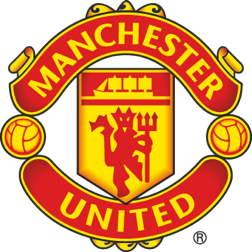Nobby Stiles: Portrait of a Man United legend
Nobby Stiles knew a good few tricks, as those who had the pleasure of his close man-marking skills could well attest. That, however, was only half the story. Those who played alongside him knew his hard-man reputation, a proto Roy Keane with his snap and snarl, all too often obscured a true appreciation of the sharpest footballing brain. It’s no accident that, alongside his old pal Sir Bobby Charlton, he remains one of only two Englishmen to win both World and European Cup finals.
But, as we reflect on his passing at 78, perhaps the greatest trick of all was one Stiles learned as a bespectacled, bloody-kneed, gap-toothed kid from the cobbled Collyhurst streets, dreaming of emulating his idol Eddie Colman, the doomed Babe whose boots he buffed to a sheen after arriving as an apprentice in 1957. “The trick,” he wrote of those formative post-War years in his exceptional autobiography, “was always to get on with life – nobody ever said it would be easy.”
Nobby Stiles passes away
ArticleManchester United are deeply saddened as the death of club legend Nobby Stiles is announced.
Getting on with life: a rule of thumb to which he cleaved as closely as he shadowed the great Eusebio at Wembley in May 1968, helping United reach European glory against Benfica; the standout of an Old Trafford career spanning 11 seasons and 395 games, a stint that also yielded title-winning medals in 1965 and 1967. If Best, Charlton and Law gripped the public’s imagination, all readily concurred that Stiles was no less instrumental to that success.
So endearingly clumsy off the pitch his team-mates nicknamed him Clouseau, on it he was a man transformed: the self-confessed “half-blind dwarf”, all 5ft 5 of him, a rock alongside the craggy Bill Foulkes in United’s back line. Stiles’ nose for danger was as sharp as a sniffer dog, his sense of a critical, well-timed pass from the back often bringing dividends up the other end.
Nobby Stiles: An obituary
ArticleEveryone at United was desperately sad to receive the news that our iconic former midfielder Nobby Stiles has died.
Life sporting the green-and-gold of St Patrick’s primary school revolved around football. Head-teacher Laurie Cassidy was the school’s first United graduate, playing a handful of games in Busby’s first teams. Stiles, Wilf McGuinness and Brian Kidd, seven years Stiles’ junior, all followed suit. While older brother, Charlie was a talented player, Nobby’s desire – initially as a right-half with a keen eye for goal – was the stronger, matched by that ferocious appetite to learn. Whatever was required of him as a team man was what he would do; watching, waiting, timing his interceptions, something drilled into him by his father, a keen footballer himself. Stiles senior pointed out to young Nobby how clean the great Johnny Carey, skipper of United’s 1948 FA Cup winners, shorts always were after every game. “You had to know the real point of playing,” Stiles recalled. “You had to understand where you fitted into the team and what your best contribution could be – be first to the ball and get your tackles in – that dictates the play.”
A hero for club and country
We reflect on the incredible career of Nobby Stiles, the United and England legend who has passed away...
The studious outlook progressed him through St Pat’s ranks to captain Manchester Schoolboys and on to a fistful of caps at the same level with England. Burnley and Bolton courted his services, but for a United-mad teenager who’d spent part of that 1948 final win with his head stuck in the sofa in woe as United trailed Blackpool, there was only ever going to be one destination.
The horror of Munich merely strengthened that bond. The lost boys were those he’d looked up to in awe, his gods, hopping across the bridge to the café to fetch their post-training bacon butties. The decimation of United’s playing pool obliged these young hopefuls to “grow up faster than any footballers before or since, and not just as players, but as young men.”
Stiles’ reserve-team debut came at the back end of 1958 against Aston Villa. He’d turned professional by the 1960/61 campaign, which brought a senior debut – and an assist – at Bolton in October’s 1-1 draw.
How United made European history
ArticleOur famous European Cup win at Wembley, on 29 May 1968, was the holy grail for the brilliant Sir Matt Busby.
Still at right-half or inside forward and competing for a first-team spot with recent arrival Paddy Crerand, Stiles’ switch to central defence came through a quirk of fate a couple of seasons later. A freak injury to Maurice Setters, slipping on the marble floor of United’s hotel lobby after a European Cup Winners’ Cup thrashing at Sporting Lisbon, opened the door for a chance against Tottenham in mid-March 1964. Despite having never figured in the back four before, Stiles played a blinder alongside Foulkes, his perception and ability to read the play now greatly enhanced by the 20-20 vision afforded through contact lenses, something he’d tried at the suggestion of keeper Harry Gregg following a game at Everton. Containing the great Jimmy Greaves in that 3-2 success at White Hart Lane was “the clinching moment in my great battle to become a fully accepted member of the United elite – the key to everything good that came to me in the game.” It also alerted England supremo Alf Ramsey to his talents and a senior call-up followed for the game with Scotland in February 1965 – against clubmates Law and Crerand in February 1965, with Stiles mirroring his centre-half role alongside Jack Charlton.
It was the catalyst for a glorious period for club and country. “He had a kind of sixth sense for danger, and he would nip in the bud,” Bobby Charlton wrote of him. “So much of his work went unnoticed by the crowd, but all his team-mates knew his value.” They loved him, too. Although Pat Crerand dismissed Roy Keane as ‘an amateur’ when compared with Stiles’ incendiary response to on-field errors, it was a quality at odds with the reserved off-pitch family man. Now a Reds regular, he was equally indispensable to Ramsey’s 1966 World Cup bid, playing every minute of the victorious campaign, his celebratory Wembley jig, trophy in one hand, false teeth in the other famously noted in the ‘Nobby dancing’ line in Three Lions (Football’s Coming Home). Ramsey’s loyalty to Stiles was so strong he threatened to quit if forced to omit him following press censure after a mistimed tackle on France’s Jacky Simon in the group stages.Remembering a true United great
GalleryCheck out these classic pics as we look back at the life of Nobby Stiles, who passed away on 30 October 2020.
In 1989, he returned to Old Trafford at the request of Alex Ferguson, a move which brought him full circle. “I’d been away for 18 years, but it was as though I’d just stepped back a day,” he reflected. The young apprentice weaned on the deeds of Colman was now the master, fancying something of himself in the young Paul Scholes, dispensing worldly advice to the Nevilles, Beckham and Butt. The blood of his life flowing to the next generation, like the River Irk at the bottom of the hill next to St Pat’s ‘Tip’ ground: the first theatre of Stiles’ dreams.
At that ground, levelled by his dad, young Nobby would get a six-penny piece for keeping the ball out of the river. Ever watchful, ready to intercept, just waiting for that moment. His dad, such an influence, had always told Stiles to watch how players came out at Wembley before big games. “The players who keep their heads down when they walk out of the tunnel just don’t perform,” his father had observed. “The ones who are looking up, taking it all in, seem to get stuck right into the game. It’s like they’re saying: “This kind of day may never come again, and I’m not going to waste it. So, I want to see you with your head up, and I want you to be saying: ‘I’m here to play.’” It was another trick Nobby Stiles never forgot. As long as football is played, so he will be remembered: be that at Old Trafford, Wembley, or back where it all started, at St Patrick’s. Fittingly, in 2016, they renamed the adjacent street to his old stomping ground Nobby Stiles Drive.




